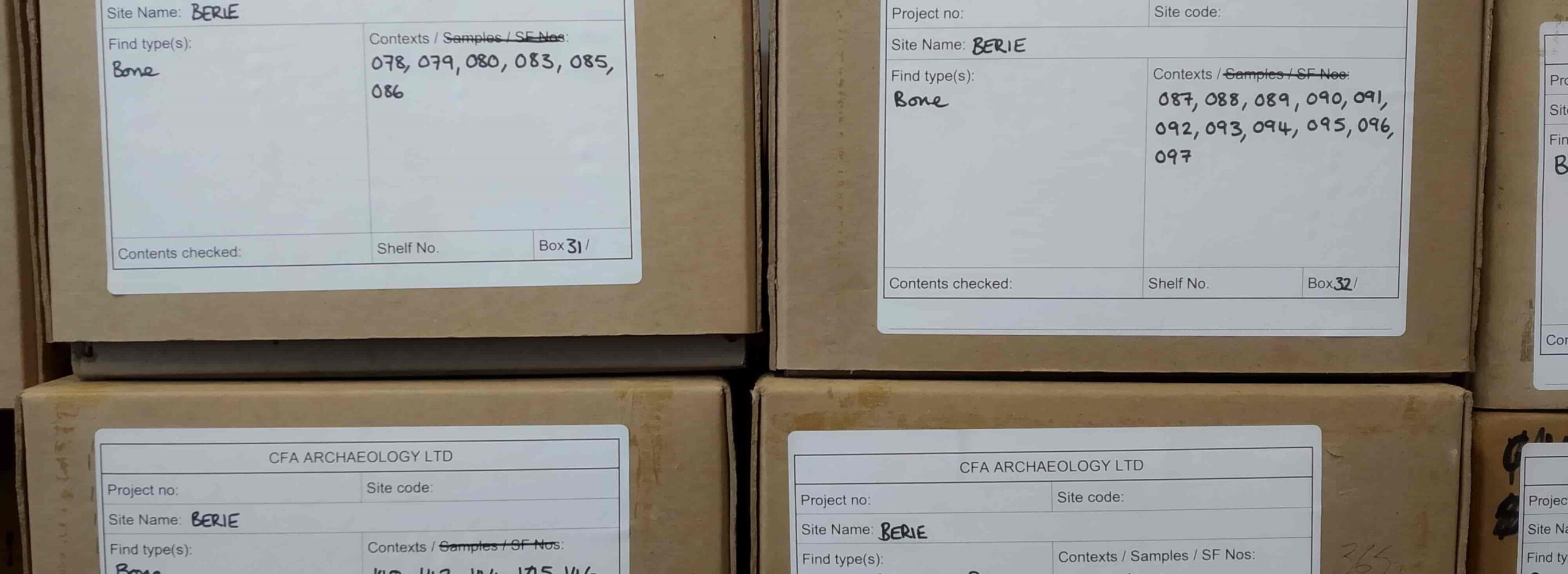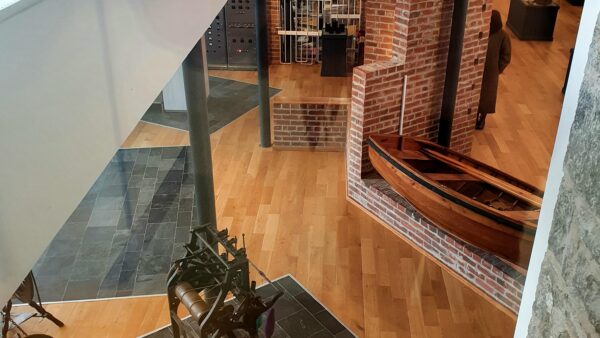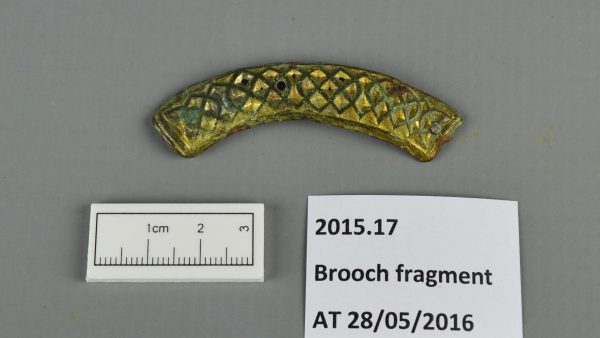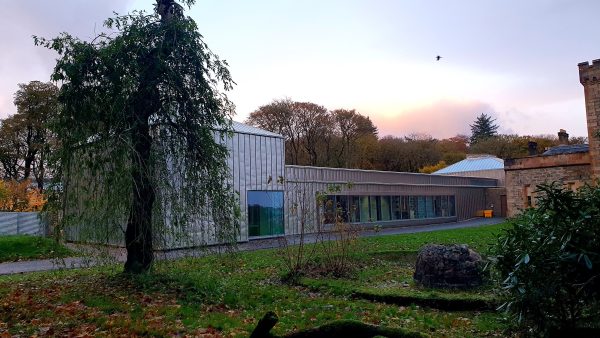
The site of Loch na Beirgh
Project Officer Sam Ferrer explains why Loch na Beirgh is the focus for the Archaeology Awakened project

The site of Loch na Beirgh is a broch on a rocky islet in a loch, now silted up and covered with reeds, near Traigh na Beirgh in Bhaltos in Uig, Lewis. It is a protected Scheduled Monument with great significance to the history of the Hebridean Iron Age. The Calanais Archaeological Research Centre from the University of Edinburgh carried out a programme of excavations from 1985 to 1995, yielding a rich and diverse material assemblage. The current 164 boxes of finds for Beirgh (BER) are the main focus of attention for the Archaeology Awakened project. The project aims to improve the knowledge, management and access of the archaeology collections of Museum nan Eilean and design a programme of dissemination of the archaeology of the Outer Hebrides for a broader audience, general public and academics.
But why choose this particular assemblage for the project? The answer lies in two main features: its relevance for studying Hebridean prehistory and its potential for even more research. Working on the assemblage from Loch na Beirgh is an exceptional opportunity to further the research of the Outer Hebrides in the Iron Age.
It’s a multi-period site
The site of Loch na Beirgh has solid archaeological potential due to the sequence of successive structural phases from at least the 2nd century BC up to the 9th century BC – almost a millennia of archaeology. The excavation brought to light four main phases with distinctive structural characteristics for each of them:
Phase A is the latest occupation of the Late Iron Age or later “Pictish” period, represented by a configuration of cells creating a figure-of-eight-shaped structure;
Phase B is the earlier “Pictish” period, represented by a series of small cellular structures, giving an apparent ‘shamrock’-shaped plan. Additionally, there’s a souterrain-like structure;
Phase C is an earlier period, represented by a Roundhouse built inside the inner wall of the earlier structure. It probably took many features from the old structure to accommodate the new dwelling needs. It’s a very condensed phase, and further studies will be needed to clarify the whole sequence;
Phase D is the earliest period, represented by the complex Atlantic roundhouse (CAR) or broch. It’s the period least studied and the one needing further research to understand the site formation of Loch na Beirgh.
Overall, there’s a well-studied sequence for the later phases of the site. Still, the opposite situation for the earliest phases of the BER, the origin, and initial sequence needs further research to understand the whole history of the site and its role within the area’s archaeology.
A rich Iron Age assemblage
The 150 boxes of materials from the excavations yielded a myriad of finds relevant to the knowledge of the Iron Age. Inorganic artefacts include a great collection of stone tools, examples of local pottery fabrics, the production of metal artefacts and the only pottery fragment of Roman Samian ware (terra sigillata), giving evidence of some long-distance trade or exchange.
The assemblage also includes a massive collection of bones allowing us to study the consumption patterns and environmental conditions during the sequence of BER. The earlier deposits have survived with a remarkable degree of organic preservation, relevant for the continuation of the environmental study of the area while the site was thriving with human activity.
Its role within the archaeology of the area
What was the role of the Beirgh broch and successive later structures in the Iron Age of Bhaltos? When mapping the whole peninsula, the Iron Age activity is well known; the broch of Dun Bharabat, and the Cnip and MacLeod’s wheelhouses are less than a mile away from Beirgh. Indeed, there’s a network of Iron Age sites in the area, and studying the relationship among them will shed light on the human occupation of Bhaltos during the first millennium AD.
Was the nature of the site defensive? The ‘stately home’ of the Atlantic Iron Age? Or a new avenue we must investigate? Luckily, modern archaeology is evolving and improving. We can now discover more information from finds excavated more than 30 years ago.
As usual in archaeology, more questions than answers, but the ones that we can answer will start with improving the management, knowledge, and access of the Loch na Beirgh assemblage to make sure we (and the research community) can extract as much as possible of what this assemblage can tell us about the Hebridean Iron Age!
Have a look at our video to see and find out more:
References
If you want to find out more and immerse yourself in some of the finds studies carried out, do give these a read:
About the structures and stratigraphy: Harding, D. W. and Gilmour, S. M D. (2000). The Iron Age settlement at Beirgh, Riof, Isle of Lewis, excavations 1985-95. Volume 1: the structures and stratigraphy.
About the pottery assemblage: Johnson, Melanie (2005). The Iron Age Pottery of the Western Isles of Scotland with specific reference to Loch na Beirgh, Riof, Isle of Lewis. PhD thesis, University of Edinburgh
About the mammal bones in the later phases: Thoms, J. (2005). Aspects of economy and environment of north west Lewis in the first millennium AD: The non-marine faunal evidence from Bostadh and Beirgh considered within the framework of north Atlantic Scotland. PhD thesis, University of Edinburgh
About the fish remains: Ceron-Carrasco, R. N. (2002). ‘Of Fish and Men’ (‘De Iasg Agus Dhaoine’): A study of the utilization of marine resources as recovered from selected Hebridean archaeological sites. PhD thesis, University of Edinburgh.
About the non-ferrous metalworking objects: Heald, A. (2005). Non-ferrous metalworking in Iron Age Scotland c.700BC to AD800. University of Edinburgh.
About the paleoenvironment: Church, M. J. (2002). Plants and people in the later prehistoric and Norse periods of the Western Isles of Scotland. PhD thesis, University of Edinburgh.
Archaeology Awakened is funded by Museums Galleries Scotland.



